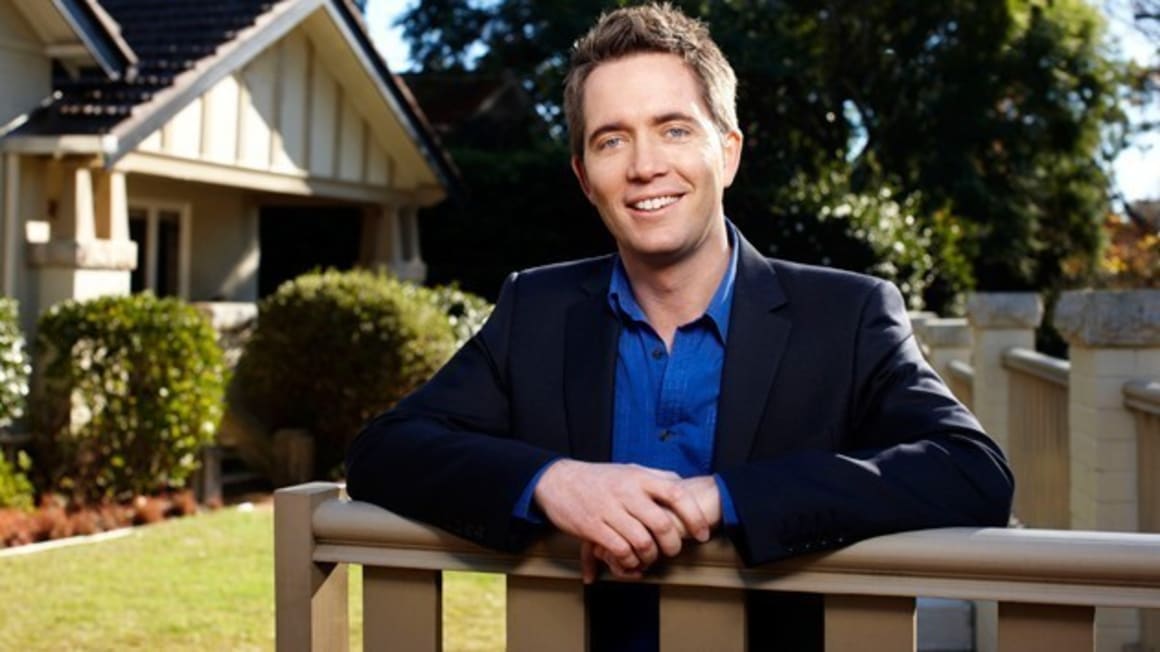Behind the scenes with Bryce Holdaway

Property expert and host of Relocation Relocation Australia and Location Location Location Australia Bryce Holdaway sat down with Property Observer to discuss his love for property, his top tips for purchasing an investment property, and shares some valuable insights through his experience.
{qtube vid:=zzYUQV4z8ic}
Holdaway’s interest in property started some 19 years ago while he was an accounting student in Perth. Not wanting to go through the motions of being a stock-standard accountant, he one day chanced upon the best-selling book Building Wealth Through Investment Property. Since then, he was set on making a career out of property.
After graduating from university, he started work as an accountant while building a property business on the side. Fast forward a few years and he is a buyer’s agent and director of property advisory firm Empower Wealth in addition to his role on television.
He advises every investor to view property investment as a process, not an event. His five steps to ensure a successful investment are:
- Clarify
- Evaluate
- Plan
- Implement
- Manage
“In practice, I’ve found that if you don’t do it in that order, chances are it might not be ideal,” he said.
Holdaway also implements three “scarcity filters” before selecting an asset.
“If it’s a house, there’s got to be scarcity of land,” he said. “In nice areas it’s good to have the lifestyle options – transport, or the local restaurant or school, and have no availability of fresh land.”
He also cites scarcity of architecture and, especially when it comes to apartments, scarcity in number.
“I would ignore probably about 95-98% of apartments. I like established properties, less than 20 in a block with no pool – typically a 1930s style art deco or a 60s-70s style apartments that’s a bit bigger. They are smaller in number, and surrounded by all these beautiful homes, that will drive up the price,” he says.
As for large developments, he said, “Quite often people are seduced by the allure of shiny taps and brand new facilities, which I think is a false economy.”
He believes that one should not "buy depreciation" – but instead add value with either cosmetic or structural renovations.
“In the cities we are price takers, not price makers. If you're in a regional town you can be a price maker, but in the city you're a price taker. If you get the location right, you can do some things to the property to add value to it,” he said.
In addition, Holdaway recommends avoiding properties that are built for investors – such as student accommodation or hotels. Instead, he prefers properties that have some owner-occupier appeal.
“They (owner-occupiers) actually buy property on emotion; they have their heart invested in the property; they are more likely to throw logic out of the window and overpay – and that's what I want,” he said.
He also believes in striking a balance between capital growth and income.
“If you need more income early on in your portfolio, you still need some growth; if you're chasing growth, you still need to get the balance of income right,” he said.
He recalls purchasing his first investment property in 1999: a Perth apartment that cost $199,940 at the time, when the median price was $158,000.
The building was mostly occupied by renters, not owner-occupiers, and he purchased the property in partnership which meant he was joint and severally liable for the loan. He owned a portion of the property but was liable for 100% of the debt.
“I actually had borrowing capacity constraints when I went to buy my second and subsequent property,” he said.
Consequently, he realised the development consists of three towers, but his unit was in a tower with no lift – yet he was paying body corporate costs.
“It still went up in value, but I could have made a better decision,” he said.
An interesting point he raised was that most Australians don’t purchase investment property.
“I went to the ATO and asked them how many people lodged tax returns who have a rental property. Only eight out of 100 Australians buy an investment property, and out of that vey small percentage, 73% stop at one,” he said.
“I think it's actually hard to get that first property right. If people don't get that first property right they don't generally move forward.”
His last tip for property investors: constantly review your portfolio and look for opportunities to comfortable add another property to it.
“Most people don't have the resource or the capacity to keep monitoring what they've done. That's where the real opportunity lies,” he said.